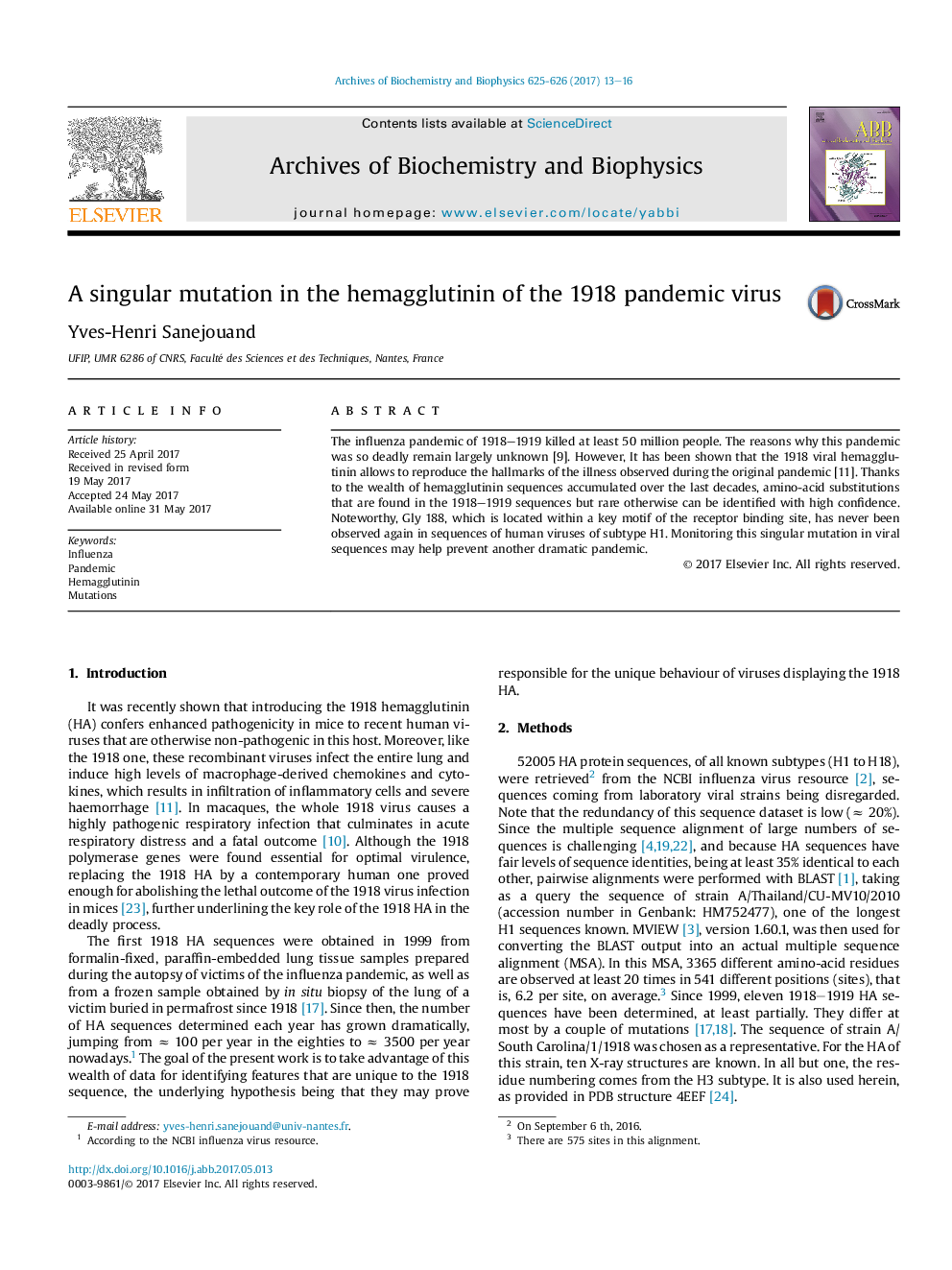| Article ID | Journal | Published Year | Pages | File Type |
|---|---|---|---|---|
| 5504354 | Archives of Biochemistry and Biophysics | 2017 | 4 Pages |
Abstract
The influenza pandemic of 1918-1919 killed at least 50 million people. The reasons why this pandemic was so deadly remain largely unknown [9]. However, It has been shown that the 1918 viral hemagglutinin allows to reproduce the hallmarks of the illness observed during the original pandemic [11]. Thanks to the wealth of hemagglutinin sequences accumulated over the last decades, amino-acid substitutions that are found in the 1918-1919 sequences but rare otherwise can be identified with high confidence. Noteworthy, Gly 188, which is located within a key motif of the receptor binding site, has never been observed again in sequences of human viruses of subtype H1. Monitoring this singular mutation in viral sequences may help prevent another dramatic pandemic.
Related Topics
Life Sciences
Biochemistry, Genetics and Molecular Biology
Biochemistry
Authors
Yves-Henri Sanejouand,
